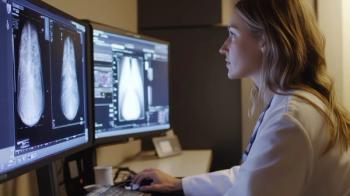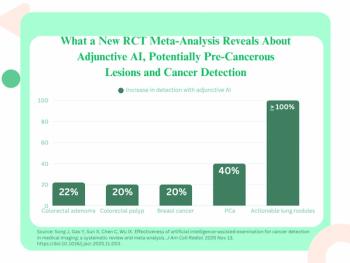
Medical Resources IPO will back center buys
Imaging center firm Medical Resources (MRI) has paid down itsdebt from a leveraged buyout two years ago, raised $6 millionin new capital through an initial public stock offering and isready to start buying centers, according to chairman Ernest J.DeSalvo.
Imaging center firm Medical Resources (MRI) has paid down itsdebt from a leveraged buyout two years ago, raised $6 millionin new capital through an initial public stock offering and isready to start buying centers, according to chairman Ernest J.DeSalvo.
The 13-year-old Clifton, NJ, company owns eight centers, mostlyin the northeast U.S., and will soon open a ninth. All centerswere developed, not acquired. MRI hopes to buy four to six imagingcenters over the next year and a half, DeSalvo said.
MRI owns one center in Florida and one in California. Thesetwo states are targets for eventual acquisition expansion, withFlorida the more immediate prospect.
After first acquiring some independents, the firm would thenconsider buying multicenter companies that had grouped centerstogether as a financial play but could not make a go of the businessoperationally, DeSalvo said.
"I have seen three or four of these groups saying `Letsconsolidate and go public,'" he said. "How are theygoing to run a company with people who don't have the experience?"
MRI launched its IPO in September, selling a total of 920,000shares of common stock at $7.50 per share. Net proceeds afterIPO costs amount to between $5.8 million and $6 million, DeSalvosaid. MRI is listed on the NASDAQ national list and expects tobe on full NASDAQ in January, after four consecutive quartersof profits.
The center company was structured as a partnership followinga 1990 buyout of original venture capital investors led by MRImanagement and investment firm Siegler Tollery (SCAN 9/26/90).Siegler Tollery remains as controlling shareholder following theIPO.
Asset depreciation was accelerated while MRI was a partnership,leading to net losses that provided tax benefits to the partners.The firm's imaging center business was operating profitably duringthis period, DeSalvo said.
MRI cut the number of its own referring-physician investorsas government self-referral regulations evolved. It has maintainedstrong service revenue growth with a focus on operations and marketing.The firm has about $30 million in annual patient billings, over90% of which are generated by non-investor physicians, he said.
"We have very few investor physicians left, yet we havehad growth rates of close to 30% a year," DeSalvo said.
The firm feels that physician owners will be most comfortableselling to a center company with a successful operational trackrecord.
"We know how to pick the right transaction, and we knowhow to grow them," he said. "We raised the (IPO) moneyspecifically to go out and take part in what we see as a $1.5billion divestiture happening over the next three years."
CENTER ACQUISITIONS MAKE MORE SENSE than ground-up development,especially for public companies, he said.
"Who needs to accrue losses in the beginning? It is easierto acquire centers that are profitable--if you know how to managethem and continue to grow the sales," DeSalvo said.
Part of MRI's funds will be used to upgrade and expand acquiredcenters, he said. The firm will invest in magnetic-resonance-onlyas well as multimodality centers, but it will seek to bring innew modalities to the MR centers. New areas of imaging service,such as women's health and cardiac imaging, will also be explored.
MRI is looking at centers with prices between 3.5 and fivetimes pre-tax net earnings. A center considered for acquisitionwould have to pass a rigorous set of screening guidelines developedby the firm to determine which centers are most likely to be successful.DeSalvo would not discuss specifics of the screening criteria,which he considers a competitive advantage for his firm.
MRI would not enter a new region now unless it is able to pickup three or four centers at one time, he said.
"We don't care how good a deal is, we won't buy one inChicago, for instance. We might buy four in Chicago, but we won'tbuy one. We have to have the regional economies and good management,"DeSalvo said.
Expansion in California is on a back burner for MRI, even thoughthe firm has one center there, he said. California's doctor-ownersremain reluctant to exit under pressure of prospective state andfederal regulations. Florida doctors, on the other hand, needless convincing following passage of self-referral legislationin that state (SCAN 7/15/92).
"Physicians in the California market seem not to believethat anything bad is going to happen to their vested interests,"DeSalvo commented. "There are doctors who are looking toget out now but, by and large, most are holding on for some dreamthat it (pressure on referring-physician ownership) is all goingto go away. This is an ostrich syndrome."
BRIEFLY NOTED:
- ImageAmerica finally launched its initial public stockoffering last month. The Nashville imaging center company, formerlyMedInc, sold 2.3 million shares at $7 per share. The firm is listedon the NASDAQ stock market.
ImageAmerica was not able to raise the funds it had hoped forearlier this year. The firm issued a prospectus for its IPO inApril, expecting to offer 3.65 million shares at $10 to $12 pershare. After a switch in underwriters, a second prospectus wasissued in September with expectations of 2.5 million shares sellingat $8 to $10 per share.
- Although capital access for U.S. hospitals appears tobe improving this year, growth in hospital spending is slowing,according to the 1992 Hospital Capital Survey of the Chicago-basedLINC Group, a major medical financing company. LINC interviewedabout 300 top financial officers for non-federal, acute-care hospitals,representing 6% of the total number of these institutions in theU.S.
Growth in new diagnostic imaging center projects is slowingat a more than average rate for these hospitals. The imaging centercategory, at 8.6% of respondents, sank below parking facilities,from number six to seven, in percent of hospitals initiating theseprojects, the survey said. The trend to fund imaging centers hasbeen down for the last two years after peaking at 14.4% of respondentsin 1990 (see graph).
- American Shared Hospital Systems of San Francisco hasnot yet seen the benefits of its expanded sales efforts. The imagingservices firm beefed up its sales and marketing personnel lastyear (SCAN 6/3/92) but expects to have "a significant loss"in the third quarter (end-September) of this year, the firm saidlast month.
This loss accounted for a missed semiannual interest paymentby ASHS in October. The firm has been struggling to reduce itshigh level of debt and interest payments for some time. It misseda previous semiannual interest payment last spring (SCAN 5/8/91).
ASHS attributed the expected quarterly loss to declining imagingservices revenue, MRI remarketing costs, and writedowns on oldequipment.
"We have signed a record number of customer contractsin recent months," said Dr. Ernest A. Bates, chairman.
Newsletter
Stay at the forefront of radiology with the Diagnostic Imaging newsletter, delivering the latest news, clinical insights, and imaging advancements for today’s radiologists.



























